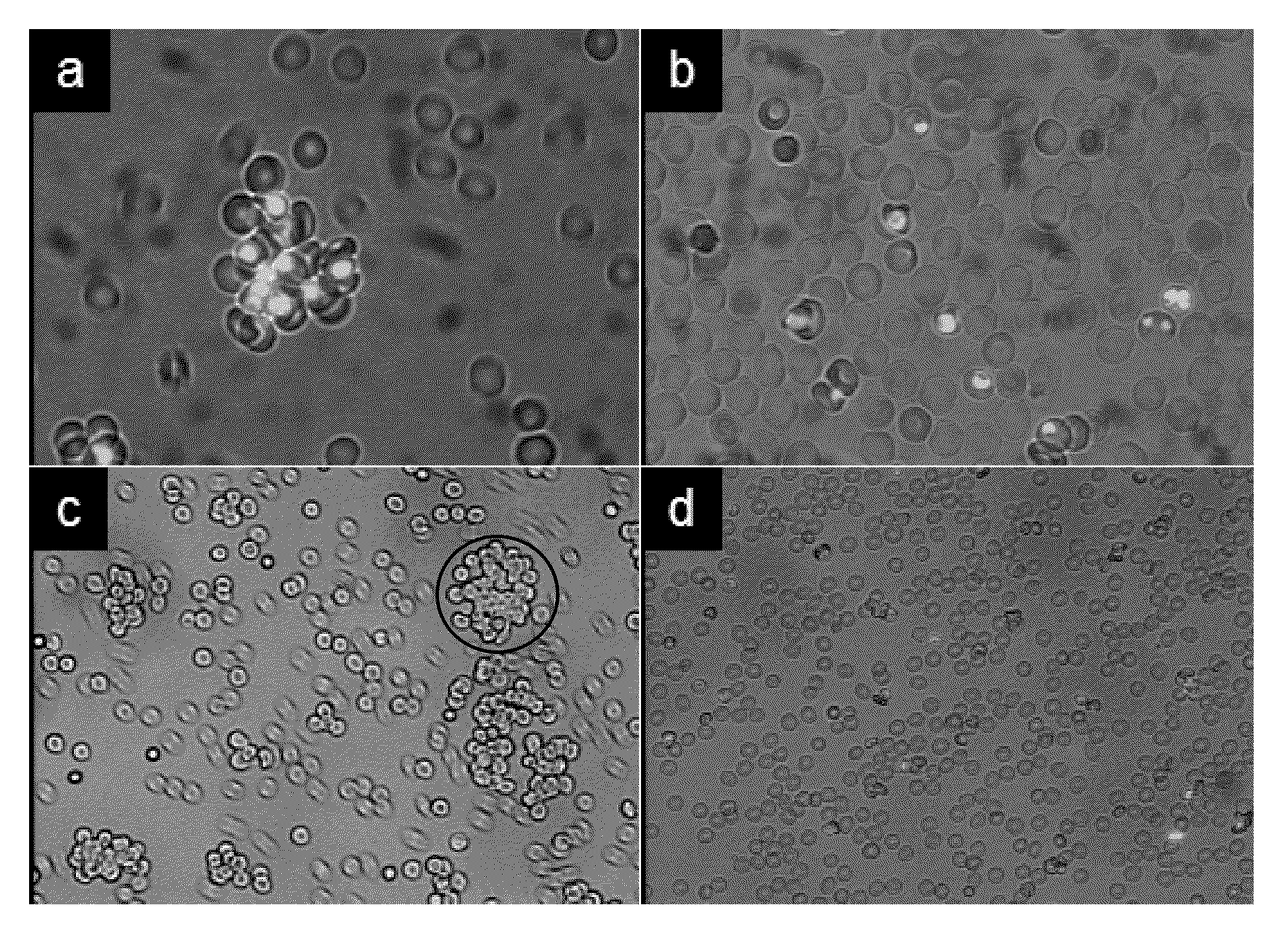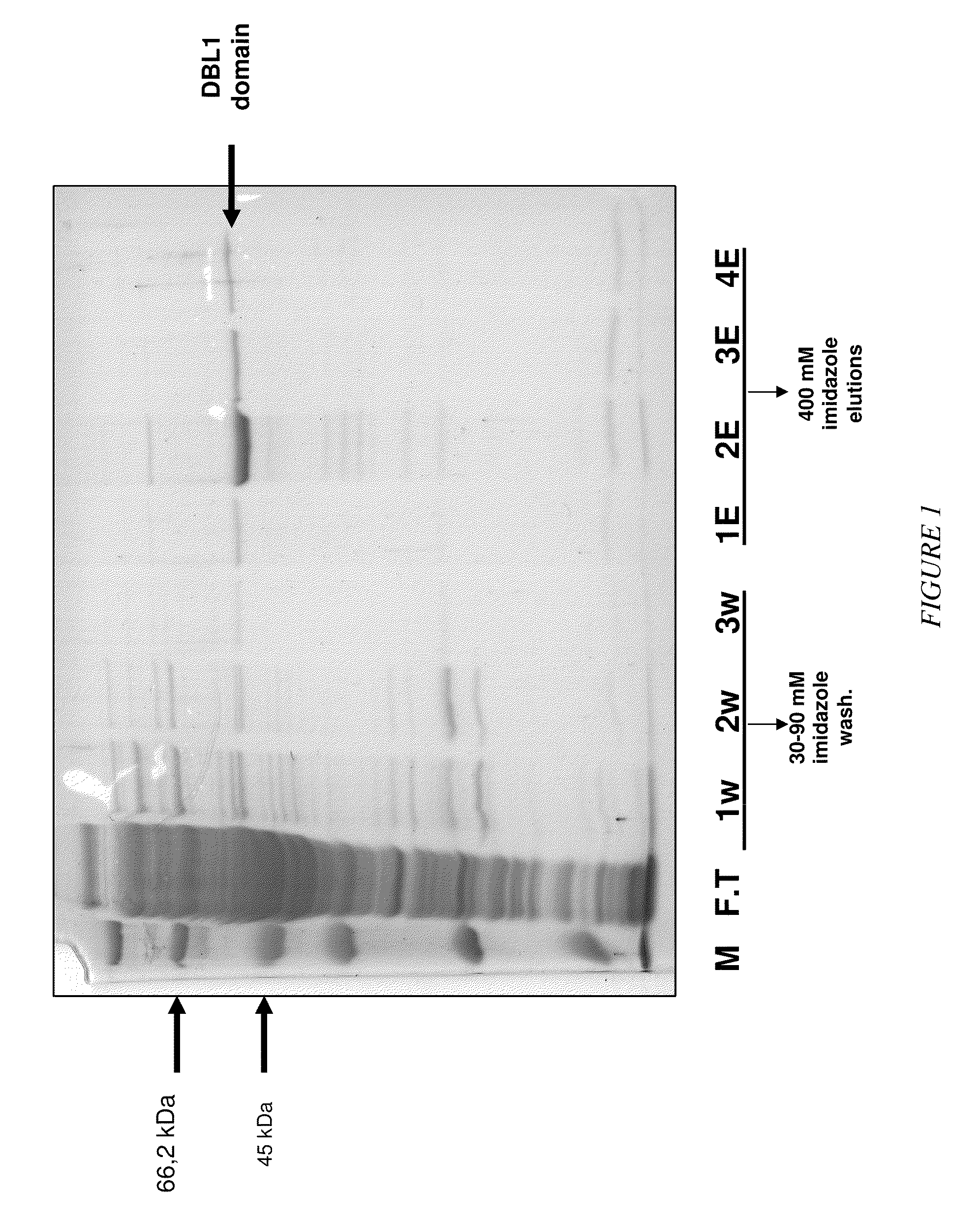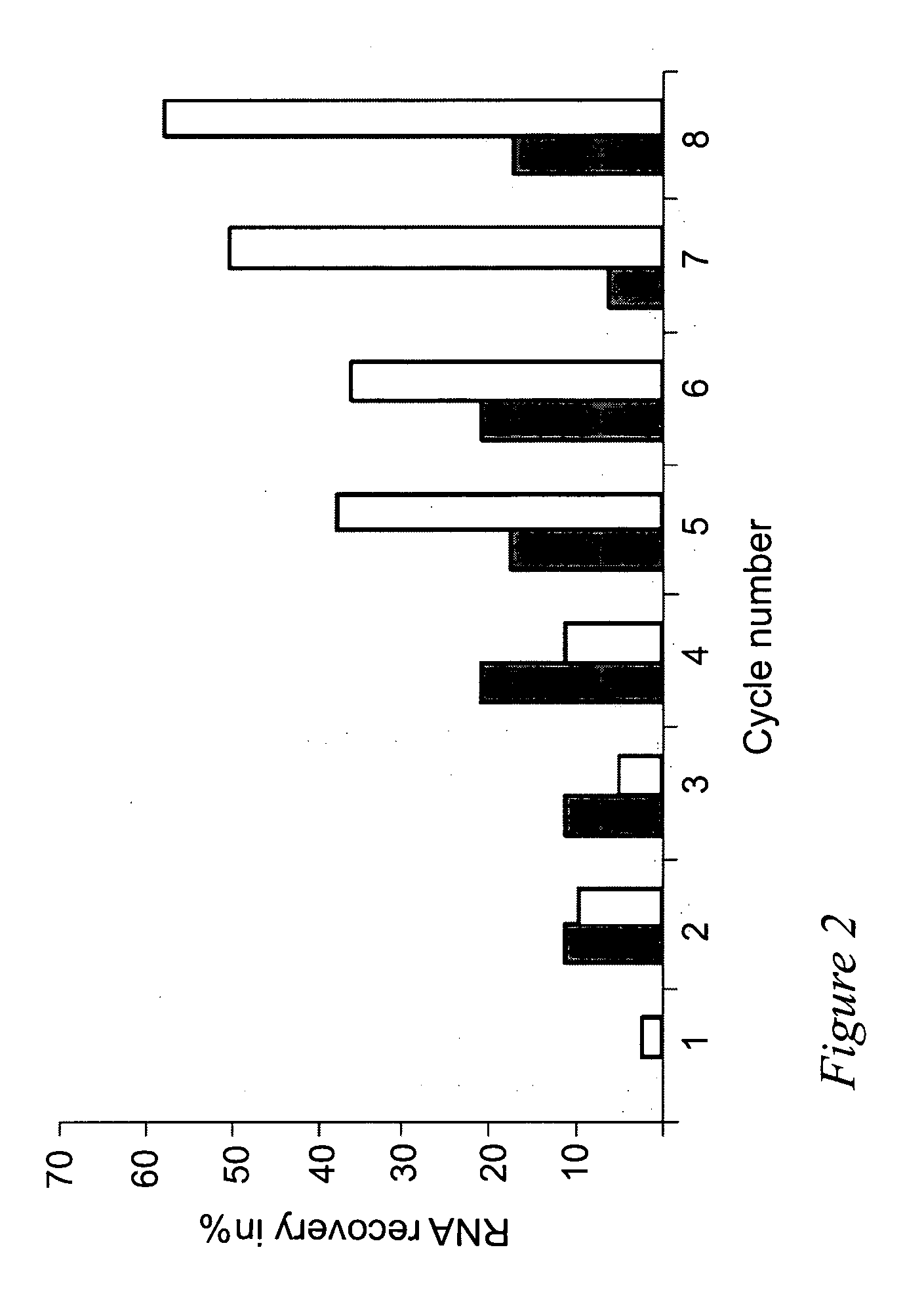Selection of RNA aptamers as Anti-malaria agents
a technology of aptamers and antimalaria, applied in the field of rnaaptame, can solve the problems of limiting the availability of some biologies, scalability and cost, and extremely difficult to elicit antibodies to aptamers
- Summary
- Abstract
- Description
- Claims
- Application Information
AI Technical Summary
Problems solved by technology
Method used
Image
Examples
Embodiment Construction
[0030]In particular the present invention relates to certain RNA-aptamers raised against the semi-conserved duffy binding ligand domain 1α, DBL1α, region of the Plasmodium falciparum erythrocyte membrane protein 1, PfEMP1.
[0031]In a preferred embodiment thereof the invention relates to an aptamer selected from the group consisting of
(SEQ. ID. NO. 1)UGCCAACCUUCGAUGCAAGAUAAUACUUUUGAUGGUGUAGUCGUAUUGUU(SEQ. ID. NO. 2)UCAUGUGCCAGUGUUUGAAAAAACGCGUUGAUUGCUGGUGUGGUGAGCUAGU,(SEQ. ID. NO. 3)CUUCGAACGGCCCUGGUUGUUGGUUUUAAUUCAUUUAUCCGCGUGGUCACGGU,(SEQ. ID. NO. 4)UAGCUCACCACACCAGCAAUCAACGCGUUUUUUCAAACACUGGCACAUGA(SEQ. ID. NO. 5)AACAAUACGACUACACCAUCAAAAGUAUUAUCUUGCAUCGAAGGUUGGCA,and(SEQ. ID. NO. 6)GUGACCACGCGGAUAAAUGAAUCAAAAACAACAACCAGGGCCGUUCGACUACGCUAAUUAUCCCG
or an active fragment thereof.
[0032]In a preferred embodiment thereof the invention relates to an aptamer having the sequence
GACUGAUUACGCCAGCUUGG(SEQ. ID. NO. 23)orGACFUFGAUFUFACFGCFCFAGCFUFUFGG(SEQ. ID. NO. 24)
[0033]In a further preferred ...
PUM
| Property | Measurement | Unit |
|---|---|---|
| molecular weight | aaaaa | aaaaa |
| solubility | aaaaa | aaaaa |
| volume | aaaaa | aaaaa |
Abstract
Description
Claims
Application Information
 Login to View More
Login to View More - R&D
- Intellectual Property
- Life Sciences
- Materials
- Tech Scout
- Unparalleled Data Quality
- Higher Quality Content
- 60% Fewer Hallucinations
Browse by: Latest US Patents, China's latest patents, Technical Efficacy Thesaurus, Application Domain, Technology Topic, Popular Technical Reports.
© 2025 PatSnap. All rights reserved.Legal|Privacy policy|Modern Slavery Act Transparency Statement|Sitemap|About US| Contact US: help@patsnap.com



